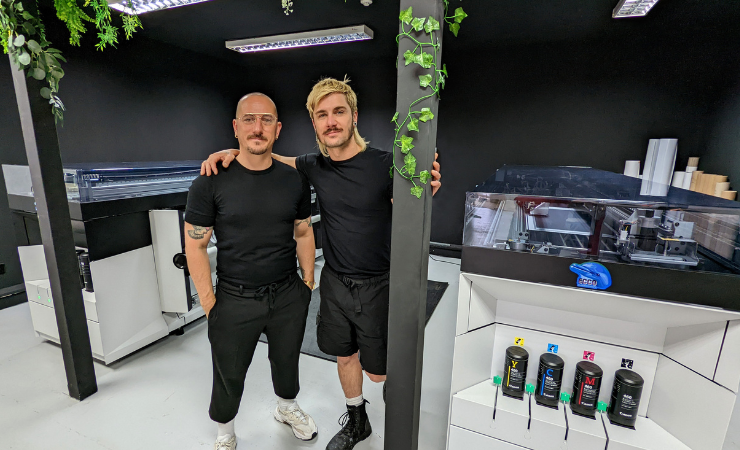Edinburgh-based photo backdrop company Pineapple Express has invested in a Canon Colorado 1630 printer, to replace its last remaining HP Latex, just one year after installing a Colorado 1650 also purchased from CMYUK.
The new printer has a mono-directional mode, currently unavailable on the 1650, to produce clean dark colours which has enabled the company to support twice the volume of work. The Colorado 1630 can also switch instantly from matte to gloss mode.
Co-founder and joint managing director alongside partner Thomas Gilmartin, Matt Gunn-Gull said, ‘There are parts that HP Latex technology can’t reach which led to us to look for an alternative.
‘The durability and quality of the Colorado prints are superior to the prints coming from our old HP Latex machines to the point where customers were noticing. Even the slowest mono-directional speed on the 1630 is still almost three times faster than our old HPs. The combination of the 1630 with the 1650, which is a real workhorse, puts us in a very good place that allows us to produce just about anything.’
Pineapple Express, which produces backdrops for product and food photography, has worked with John Lewis, Buzzfeed and Deliveroo. Popular backdrop sizes include 60 x 90cm or 90 x 120cm. Following a recent investment into its customisable product range, photographers can now order backdrops to match their clients’ brands exactly.
Mr Gunn-Gull added, ‘Prior to installing the Colorado, colour consistency had been a nightmare. We used a spectrophotometer and calibrated the HP Latex printers twice a week. We felt we had to, otherwise they drifted into green or magenta, cold or warm territory – especially noticeable as we produce a lot of neutral greys.
‘This is a complete non-issue with the Colorado – you create a profile and that’s it. We’ve not had to do any colour calibrations either with the first or second printers since we’ve had them. We don’t even have to think about it. We’re in complete control. There’s no longer the daily battle to keep the colour in line.’
Photo backdrops must be as flat as possible and avoid glare because studio lights will pick up any imperfection, but the Latex inks would warp the substrate at high temperatures, according to Mr Gunn-Gall.
He added, ‘We took a long time to find the right heat-resistant material, and when we did, we found it through CMYUK. ‘
The company, which recently moved into a new production facility to house the second printer, also produces large canvas backdrops but found there were some durability issues when printing onto matt canvases with Latex.
Mr Gunn-Gull said, ‘You could run a fingernail over it, and you’d end up with transparent marks. When you’re running canvas through the Colorado you just don’t get that. In fact, the UV-gel inks almost make the canvas waterproof. You can literally flick mayonnaise or olive oil on it – not uncommon in the world of food photography – and it comes straight off. These gel inks are super durable.’

